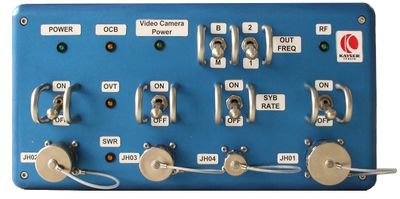Difference between revisions of "HAMTV from the ISS"
Jump to navigation
Jump to search
| Line 25: | Line 25: | ||
*SIF resolution: 352×240 or D1:720×480 | *SIF resolution: 352×240 or D1:720×480 | ||
| − | ==What is | + | ==What is HAMTV used for?== |
| + | |||
| + | The primary use is during ARISS schools contacts, when the astronaut will use a camera to show himself and the inside of the ISS during the VHF radio contact. | ||
| + | |||
| + | It is hoped that test patterns, including JPEG images, will be transmitted when the cameras are not in use. | ||
Revision as of 09:27, 2 March 2024
Following repairs carried out last year it now looks likely that the original HAMTV unit will be returned to the ISS with potential commissioning by a visiting astronaut during April 2024.
What is HamTV
HAMTV is the name of the Digital Amateur Television (DATV) transmitter on board the Columbus module of the International Space Station (ISS).
It transmits Digital video and audio in MPEG-2 format using the DVB-S protocol in the 13cms band on 2395MHz.
HAMTV specification
Ham Video downlink frequencies
- 2395 MHz (main operating frequency)
- 2369 MHz
- 2422 MHz
- 2437 MHz
DVB-S modulation
- Symbol rates: 1.3 Ms/s and 2.0 Ms/s
- FEC : ½
Video format
- NTSC
- SIF resolution: 352×240 or D1:720×480
What is HAMTV used for?
The primary use is during ARISS schools contacts, when the astronaut will use a camera to show himself and the inside of the ISS during the VHF radio contact.
It is hoped that test patterns, including JPEG images, will be transmitted when the cameras are not in use.
